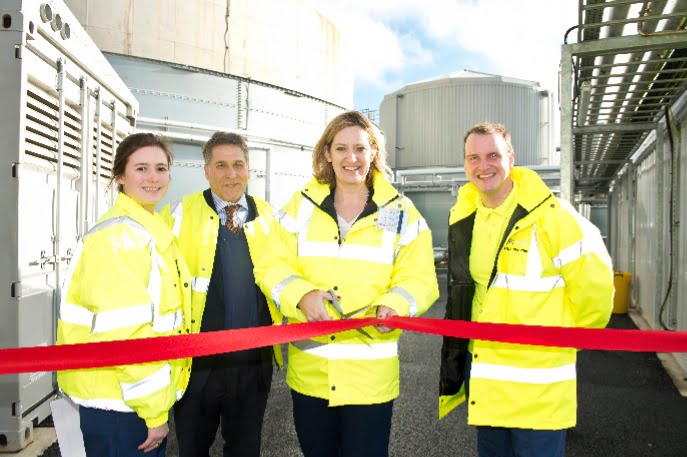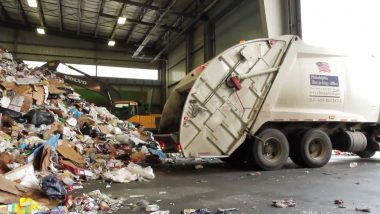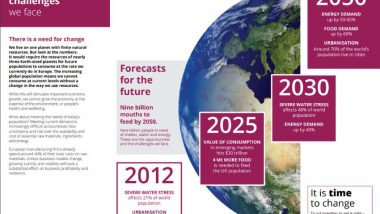Anaerobic Digestion is both a waste treatment technology and a highly sustainable energy technology. Recent rises in energy costs, coupled with EU member state incentives, and waste management policy, now mean that economic viability has been attained.
That's what we said in 2006! In general it is still true, however, in many EU nations, Britain included biogas subsidises introduced between 2006 and 2015 have since been watered down, or removed entirely. Profitable biogas plant operation is still readily achievable. Nobody today would question whether any biogas plant could provide a return on investment today, in the way the question was posed in those days.
Anaerobic Digestion Industry Developments Since 2006
What has changed in recent years up 2020, is that it is no longer possible to build a biogas plant underwritten by the government to make a known premium in the long term. In other words the early subsidies were generous to get the first plants built at all. But, very quickly as the technology improved and costs dropped. Confidence rose, and the plants were seen as being over-subsidised.
Back in 2006 Germany was the only European nation where there was substantial activity in the biogas plant market.
That was due to a generous government subsidy available to German farmers for producing electricity from biogas. At that time they were paid well for the green electricity. The incentives given were of great benefit to the German anaerobic digestion plant equipment market and biogas plant construction contractors. The number of digesters built then led to a German AD Plant maintenance and services industry ahead of any other nation. So much so, that German equipment and construction skills dominate much of the world's biogas industry still today.

The problem was that German (and some US anaerobic digestion plants) in particular, were part of an overall push by governments to reduce fossil fuel emissions from transport. The idea was that food crops would be used to make renewable energy (especially bio-diesel). Bio-diesel would be used as a low-percentage addition to fossil fuels across the board, and reduce carbon dioxide emissions.
This quite naturally was going to compete in the market for our food and possibly raise the price of food. Ever since there has been politically very unpopular for that reason. Most subsidies for electricity production, if they remain at all, now severely restrict the amount of food crop which can be digested.
The good news for anaerobic digestion process adoption is that now almost all AD plants in the future will be built to be fed with almost 100% waste materials. Little, if any food, is to be used for energy production.
[box type=”info” style=”rounded” border=”full”]The following section is the content of the original blog post from December 2006, is an archive page. We have kept this page “live”, as we think it is a historically relevant page, which makes a bold profit claim which seems to have been proved correct, on the basis of the recent growth in Biogas Plants.[/box]
Our article explains how this technology can also provide a politically secure energy supply, and argues that there should be more fiscal assistance to promote Anaerobic Digestion.

Find out more about Anaerobic Digestion technology, and how it can treat waste AND alleviate climate change by reducing greenhouse gas emissions, visit the IPPTS AnaerobicDigestion website.
[box type=”info” style=”rounded” border=”full”]The following is an UPDATE to this page, and reports on current Anaerobic Digestion Plant News.[/box]
What the world thinks of the anaerobic digestion and biogas process in 2018:
What to consider when building your anaerobic digestion plant
Good plant design and separation of equipment may help prevent losses and lead to competitive and sustainable insurance premiums.
Recent claims in the anaerobic digestion (AD) industry have led to a focus on whether developers are taking the correct planning considerations into account when building their AD plants.
By reviewing the risks prior to construction and incorporating mitigations within the design and build of the plant, developers will be able to demonstrate an improved risk which will be viewed favourably by insurers.
Considering risk mitigation during the design phase can avoid the eventuality of losses. For example, if you have wide separation between key plant items, you may save your plant from total loss by allowing the fire brigade get to the site in time and to contain the fire to a smaller section of the plant. It is easier and cheaper to replace an engine, for example, than the entire plant.
The majority of build and maintenance contractors recognise that it is good practise to build biogas plants using experienced contractors; to install well-recognised plant and machinery with a proven track record, and to manage risks with, for example, good operational housekeeping. While all good engineers will undertake to design and build a suitable plant, often little consideration is given to plant design should a fire occur.
In the UK, fire risk assessments are primarily concerned with personnel safety, and workers’ ability to escape a fire, whereas a property insurer’s objective will be to try to reduce exposure to building and machinery losses from fire. via Renewable EnergyJLTSpecialty
Certification scheme will “revolutionise” UK anaerobic digestion industry
A newly launched certification scheme could be a breath of fresh air for the UK’s anaerobic digestion (AD) and biogas industries, according to Duncan McPherson, finance director at CooperOstlund.
As 2017 drew to a close, the UK’s Anaerobic Digestion and Bioresources Association (ADBA) launched a new AD certification scheme, the first of its kind in the UK, designed to support operators of AD plants in improving their operational, environmental, and health and safety performance, in particular in terms of energy generation and digestate quality.
“Since the introduction of government-driven subsidies for generating renewable energy, including the Renewable Heat Incentive (RHI), Feed-in Tariffs (FiTs) and the Renewables Obligation (RO), anaerobic digestion (AD) has quickly shifted from innovative thinking to established technology. In fact, the number of UK AD facilities has grown by nearly 500% in five years – from 100 in 2013, to 578 in 2017.*” McPherson writes.
“Although continued degressions have seen this figure seemingly decelerate, more than 100 million tonnes of organic material is now treated by AD every year. Alongside diverting resource away from landfill and offsetting carbon emissions, this generates enough energy to power one million homes nationwide.”
Anaerobic Digestion as a Tool for California’s Clean Transportation Efforts
As one of the most populous states in the nation and a center of agricultural activity, California faces a waste disposal problem.
Organic waste sent to municipal waste water treatment plants and landfills from cities, businesses, industry and agricultural operations not only take up significant space but are also a significant, if lesser-known, source of greenhouse gas (GHG) emissions.
In fact, California’s largest single source of fugitive methane, a powerful greenhouse gas with a global warming potential 28 to 36 times higher than carbon dioxide, is the state’s dairies.
In another example, uncontrolled decomposition of food and green waste in landfills leads to heavy production of methane gas, of which 34-51% escapes the typical landfill capture system.
With proper collection, however, and refinement through anaerobic digestion, the energy-rich gases seeping from our waste management systems can be processed into renewable replacements for diesel and other fuels. via ADTool for California
Content added in 2020:
More Anaerobic Digestion Industry Developments Since 2006
Anaerobic Digestion (AD) is a natural process where plant as well as animal materials (biomass) are rotted down by archaic micro-organisms in a lack of air. The AD process starts when organic materials (mostly waste) is placed inside a storage tank or digester which has a lid or top which is sealed from the passage of air.
Naturally occurring micro-organisms digest the biomass. That launches-free many bubbles of a methane-rich gas (biogas) that can be made use of to create sustainable warmth as well as power; this helps reduce fossil gas usage and also to reduce greenhouse gas emissions. The residual output (digestate) is abundant in nutrients, so it can be utilised as a natural fertiliser. This should help reduce demand for fossil fuels.
Economics of AD
The business economics of AD are not uncomplicated. There are many variables. When considering the feed-stocks for AD, their price must be considered versus their relative values. For instance, slurry may be openly available, crops will certainly sustain a price of manufacturing and bio-waste might bring in an entrance cost payable by the vendor as a choice to disposing to garbage dump and also paying a Land fill Tax.
Organic deposits imported from local authorities for responsible treatment and disposal can bring in an entrance fee. Nevertheless, when developing an organisational strategy it is essential to be aware that the worth of gate costs can vary considerably.
Applications of the Anaerobic Digester as part of a Sanitation System.
Anaerobic digestion creates a digested slurry (digestate) that can be made use of as a plant food, and also biogas that can be made use of for power.
Using anaerobic food digestion innovations can assist to decrease the exhaust of greenhouse gases in a number of key methods:
Replacement of non-renewable fuel sources can achieve the following:
- Minimizing or getting rid of the power impact of waste treatment plants
- Decreasing methane discharge from garbage dumps
- Displacing industrially produced chemical plant foods
- Reducing the need for vehicle miles/ “food miles”
- Lowering electrical grid power transport losses
- Lowering use of fossil fuel based LP Gas for cooking
Plus, many see it as an essential part of the “Zero Waste to Landfill” efforts.




